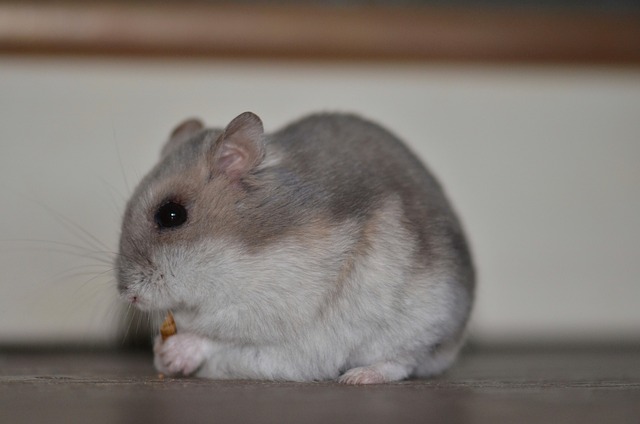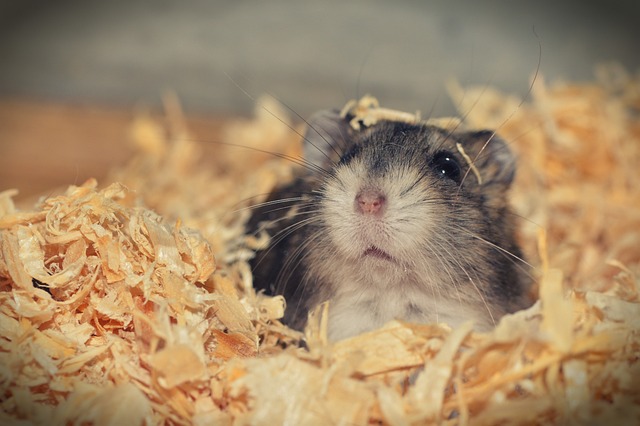Common Illnesses In Hamsters – Hamsters.pk
Respiratory Infections: Recognizing and Treating Breathing Problems in Hamsters
Hamsters are adorable and low-maintenance pets, but they can be susceptible to various health issues, including respiratory infections. As a responsible hamster owner, it’s crucial to recognize the signs of breathing problems and know how to treat them effectively. In this article, we’ll discuss the causes, symptoms, and treatment options for respiratory infections in hamsters.
Causes of Respiratory Infections in Hamsters
Several factors can contribute to the development of respiratory infections in hamsters:
- Poor cage conditions: Inadequate ventilation, high humidity, and excessive ammonia levels from urine and feces can irritate a hamster’s respiratory system.
- Stress: Stressful situations, such as overcrowding or changes in environment, can weaken a hamster’s immune system, making them more vulnerable to infections.
- Exposure to drafts: Hamsters exposed to cold drafts or sudden temperature changes are more likely to develop respiratory issues.
- Dusty bedding: Some bedding materials, like cedar or pine shavings, can contain dust or irritants that aggravate a hamster’s respiratory tract.
Symptoms of Respiratory Infections in Hamsters
Hamsters with respiratory infections may exhibit the following symptoms:
- Sneezing and wheezing: Frequent sneezing and wheezing sounds are common signs of respiratory distress.
- Discharge from the nose and eyes: Mucus or pus-like discharge from the nose and eyes can indicate an infection.
- Labored breathing: Hamsters with respiratory infections may struggle to breathe, often accompanied by rapid or shallow breathing.
- Lethargy and loss of appetite: As the infection progresses, hamsters may become less active and lose interest in food and water.
Treating Respiratory Infections in Hamsters
If you suspect your hamster has a respiratory infection, take the following steps:
- Consult a veterinarian: A vet can properly diagnose the infection and prescribe appropriate antibiotics or other medications.
- Improve cage conditions: Clean the cage thoroughly, ensure proper ventilation, and switch to dust-free bedding like paper-based products.
- Provide a warm environment: Keep your hamster’s cage in a warm, draft-free area to help them recover more comfortably.
- Offer a healthy diet: Feed your hamster a balanced diet rich in vitamins and minerals to support their immune system.
- Monitor their progress: Keep a close eye on your hamster’s symptoms and behavior, and follow up with your vet as needed.
Preventing Respiratory Infections in Hamsters
To minimize the risk of respiratory infections in your hamster, follow these preventive measures:
- Maintain a clean habitat: Regularly clean your hamster’s cage, removing soiled bedding and disinfecting the surfaces.
- Provide proper ventilation: Ensure your hamster’s cage has adequate ventilation to prevent the buildup of harmful ammonia and humidity.
- Use appropriate bedding: Opt for dust-free, hypoallergenic bedding materials that won’t irritate your hamster’s respiratory system.
- Avoid stressful situations: Minimize stress by providing a spacious cage, hiding spots, and a consistent routine.
- Schedule regular check-ups: Take your hamster for routine veterinary check-ups to catch any potential health issues early on.
By understanding the causes, symptoms, and treatment options for respiratory infections in hamsters, you can help keep your furry friend healthy and happy. Remember, prevention is key, so maintain a clean and comfortable environment for your hamster and always stay vigilant for any signs of illness.

Digestive Issues: Understanding and Managing Diarrhea, Constipation, and Wet Tail in Hamsters
Hamsters are prone to various digestive problems, including diarrhea, constipation, and wet tail. These issues can cause discomfort and even be life-threatening if left untreated. In this article, we’ll explore the causes, symptoms, and management strategies for these common digestive issues in hamsters.
Diarrhea in Hamsters
Diarrhea is a common digestive problem in hamsters, characterized by loose, watery stools. Some causes of diarrhea include:
- Dietary changes: Sudden changes in diet or introducing new foods can upset a hamster’s delicate digestive system.
- Bacterial infections: Salmonella or Escherichia coli (E. coli) infections can lead to diarrhea.
- Stress: Stressful situations, such as changes in environment or overcrowding, can trigger digestive issues.
Symptoms of diarrhea in hamsters include frequent, watery stools, lethargy, and loss of appetite. To manage diarrhea:
- Provide a bland diet: Offer your hamster plain, unsweetened foods like cooked rice or oatmeal to help firm up their stools.
- Ensure proper hydration: Make sure your hamster has access to fresh, clean water to prevent dehydration.
- Consult a veterinarian: If diarrhea persists or is accompanied by other symptoms, seek veterinary care for proper diagnosis and treatment.
Constipation in Hamsters
Constipation occurs when a hamster has difficulty passing stools, leading to infrequent or absent bowel movements. Causes of constipation include:
- Dehydration: Insufficient water intake can lead to hard, dry stools that are difficult to pass.
- Low-fiber diet: A diet lacking in fiber can contribute to constipation.
- Obesity: Overweight hamsters are more prone to constipation due to reduced activity levels.
Symptoms of constipation include decreased frequency of bowel movements, hard, dry stools, and straining during defecation. To manage constipation:
- Increase fiber intake: Offer your hamster fresh vegetables and fruits high in fiber, such as leafy greens and apples (without seeds).
- Encourage hydration: Provide clean, fresh water at all times and consider offering water-rich foods like cucumber.
- Promote exercise: Ensure your hamster has ample space to run and play, as physical activity can help stimulate bowel movements.
Wet Tail in Hamsters
Wet tail, also known as proliferative ileitis, is a serious and potentially fatal bacterial infection that primarily affects young hamsters. Causes of wet tail include:
- Stress: Stressful situations, such as weaning, transport, or changes in environment, can trigger the onset of wet tail.
- Poor hygiene: Unsanitary living conditions can increase the risk of bacterial overgrowth.
Symptoms of wet tail include watery diarrhea, a wet, soiled tail, lethargy, and loss of appetite. Wet tail is a medical emergency and requires immediate veterinary attention. Treatment typically involves antibiotics, fluid therapy, and supportive care.
Preventing Digestive Issues in Hamsters
To minimize the risk of digestive problems in your hamster:
- Provide a balanced diet: Offer a variety of fresh, hamster-safe foods and avoid sudden dietary changes.
- Ensure proper hydration: Always provide clean, fresh water and monitor your hamster’s water intake.
- Maintain a clean environment: Regularly clean your hamster’s cage, removing soiled bedding and disinfecting surfaces.
- Reduce stress: Provide a spacious, comfortable habitat with hiding spots and minimize changes in routine.
- Schedule regular check-ups: Take your hamster for routine veterinary check-ups to catch any potential health issues early on.
By understanding the causes, symptoms, and management strategies for diarrhea, constipation, and wet tail in hamsters, you can help keep your furry friend’s digestive system healthy. Remember, if you suspect your hamster is experiencing any digestive issues, consult a veterinarian for proper diagnosis and treatment.
Skin Conditions: Identifying and Addressing Mites, Ringworm, and Other Skin Ailments in Hamsters
Hamsters are beloved pets known for their cute appearance and playful nature. However, these small furry friends can be susceptible to various skin conditions that can cause discomfort and even lead to more serious health issues if left untreated. In this article, we’ll explore the most common skin ailments in hamsters, including mites, ringworm, and other conditions, and discuss how to identify and address them effectively.
Mites in Hamsters
Mites are tiny parasites that can infest a hamster’s skin, causing irritation, itching, and hair loss. The most common types of mites found in hamsters are Demodex and Sarcoptes scabiei. Symptoms of mite infestation include:
- Excessive scratching: Hamsters with mites may scratch themselves more frequently than usual.
- Hair loss: Mites can cause patches of hair loss, particularly around the face, ears, and back.
- Skin irritation: Infested skin may appear red, inflamed, and scaly.
To treat mites in hamsters:
- Consult a veterinarian: A vet can properly diagnose the type of mite and prescribe appropriate medication, such as ivermectin or selamectin.
- Clean the cage: Thoroughly clean and disinfect your hamster’s cage, bedding, and accessories to prevent re-infestation.
- Isolate affected hamsters: If you have multiple hamsters, separate the infested one to prevent the spread of mites.
Ringworm in Hamsters
Ringworm is a fungal infection that can affect a hamster’s skin, causing circular patches of hair loss and scaly skin. Despite its name, ringworm is not caused by a worm but by a group of fungi called dermatophytes. Symptoms of ringworm in hamsters include:
- Circular patches of hair loss: Ringworm lesions are typically circular and may appear on the face, ears, or limbs.
- Scaly or crusty skin: Affected skin may have a dry, flaky, or crusty appearance.
- Redness and inflammation: The skin around the lesions may be red and inflamed.
To treat ringworm in hamsters:
- Visit a veterinarian: A vet can diagnose ringworm through a skin scraping or culture and prescribe appropriate antifungal medication.
- Quarantine infected hamsters: Ringworm is contagious and can spread to other pets and humans, so isolate the affected hamster.
- Disinfect the environment: Clean and disinfect your hamster’s cage, bedding, and accessories to prevent the spread of spores.
Other Skin Conditions in Hamsters
In addition to mites and ringworm, hamsters can experience other skin conditions, such as:
- Abscesses: Bacterial infections can cause painful, pus-filled lumps under the skin.
- Tumors: Both benign and malignant tumors can develop on a hamster’s skin.
- Allergies: Hamsters can develop allergic reactions to certain foods, bedding materials, or environmental factors, leading to skin irritation.
If you notice any unusual lumps, bumps, or skin abnormalities in your hamster, consult a veterinarian for proper diagnosis and treatment.
Preventing Skin Conditions in Hamsters
To minimize the risk of skin conditions in your hamster:
- Maintain a clean habitat: Regularly clean your hamster’s cage, replacing bedding and disinfecting surfaces.
- Provide a balanced diet: Offer a variety of fresh, hamster-safe foods to support overall health and skin condition.
- Use appropriate bedding: Choose bedding materials that are dust-free and hypoallergenic to reduce the risk of skin irritation.
- Monitor for signs of illness: Regularly check your hamster for any changes in behavior or appearance, and address concerns promptly.
- Schedule regular check-ups: Take your hamster for routine veterinary check-ups to catch any potential health issues early on.
By understanding the common skin conditions in hamsters and taking preventive measures, you can help keep your furry friend’s skin healthy and free from discomfort. Remember, if you suspect your hamster has a skin condition, always consult a veterinarian for proper diagnosis and treatment.
Dental Problems: Preventing and Treating Overgrown Teeth and Related Issues in Hamsters
Hamsters are adorable pocket pets with unique dental features that require special attention. Like many rodents, hamsters have continuously growing teeth that need to be worn down through proper chewing and gnawing. When a hamster’s teeth become overgrown or misaligned, it can lead to various dental problems and related health issues. In this article, we’ll discuss how to prevent and treat overgrown teeth and other dental concerns in hamsters.
Understanding Hamster Teeth
Hamsters have 16 teeth in total, with four incisors (two upper and two lower) and 12 molars (six upper and six lower). The incisors are the most prominent and are used for gnawing and biting. Hamster teeth are open-rooted, meaning they grow continuously throughout the animal’s life. In the wild, hamsters naturally wear down their teeth by chewing on hard materials like seeds, nuts, and twigs. In captivity, it’s essential to provide appropriate chewing materials to maintain healthy tooth growth.
Causes of Overgrown Teeth in Hamsters
Overgrown teeth in hamsters can be caused by several factors:
- Malocclusion: This is a misalignment of the teeth, often due to genetic factors or injury, which prevents proper wearing down of the teeth.
- Lack of chewing materials: When hamsters don’t have access to suitable chewing materials, their teeth can become overgrown.
- Inappropriate diet: A diet lacking in hard, fibrous foods can contribute to overgrown teeth.
- Injury or trauma: Damage to the teeth or jaw can lead to misalignment and overgrowth.
Symptoms of Overgrown Teeth in Hamsters
Hamsters with overgrown teeth may exhibit the following symptoms:
- Difficulty eating or drooling: Overgrown teeth can make it painful or impossible for a hamster to eat properly.
- Weight loss: As a result of difficulty eating, hamsters with dental issues may experience weight loss.
- Facial swelling: Overgrown teeth can cause abscesses or infections, leading to swelling around the face or jaw.
- Excessive salivation: Hamsters with dental problems may drool more than usual.
- Visible overgrowth: In severe cases, overgrown teeth may be visible protruding from the mouth.
Treating Overgrown Teeth in Hamsters
If you suspect your hamster has overgrown teeth, consult a veterinarian specializing in exotic pets. Treatment options may include:
- Tooth trimming: A vet can safely trim overgrown teeth using specialized tools.
- Dental filing: In some cases, a vet may file down the teeth to correct misalignment.
- Antibiotics: If an infection is present, antibiotics may be prescribed to prevent further complications.
- Pain management: Pain medication may be provided to alleviate discomfort associated with dental issues.
Preventing Dental Problems in Hamsters
To help prevent dental problems in your hamster:
- Provide appropriate chewing materials: Offer hard, non-toxic chewing toys like wooden blocks, untreated twigs, or specially designed hamster chews.
- Feed a balanced diet: Ensure your hamster’s diet includes a variety of hard, fibrous foods like hamster pellets, seeds, and nuts.
- Regular check-ups: Schedule routine veterinary check-ups to catch any potential dental issues early on.
- Monitor for signs of dental problems: Regularly check your hamster’s teeth for signs of overgrowth or misalignment, and address concerns promptly.
By understanding the importance of dental health in hamsters and taking preventive measures, you can help keep your furry friend’s teeth in top condition. Remember, if you suspect your hamster has a dental problem, always consult a veterinarian for proper diagnosis and treatment.












